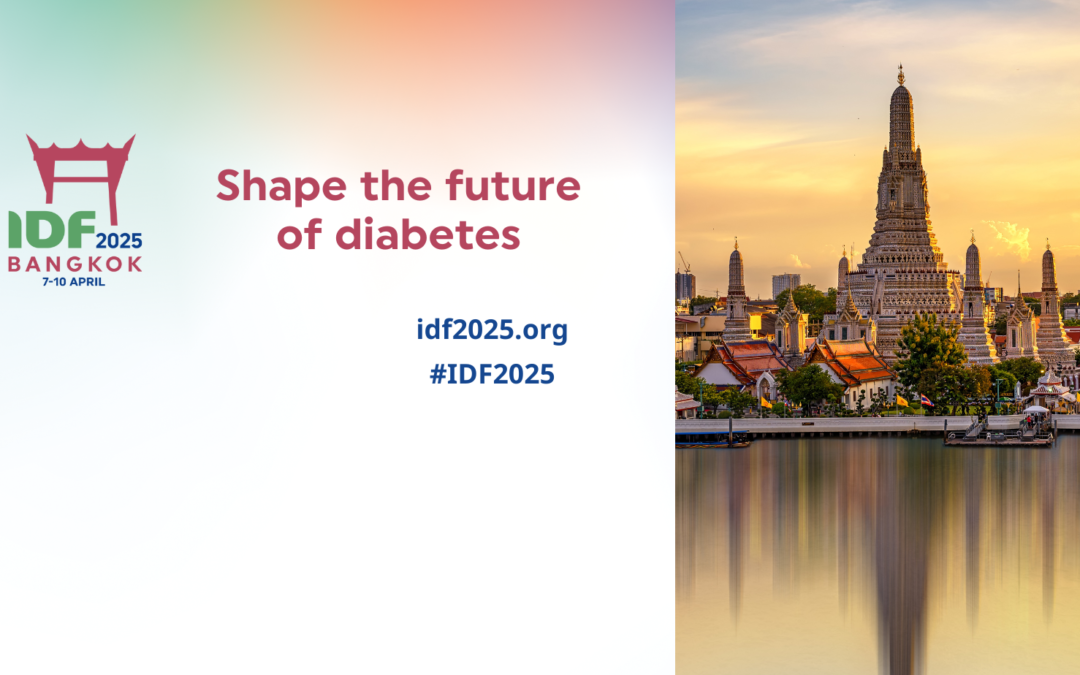
NCD-RisC estimate for 2022 differs by approximately 300 million persons compared to IDF Atlas 10th edition and GBD 2021 and by 250 million compared to IDF Atlas 11th edition 2024 estimates. IDF Atlas 11th edition 20250 projection of 853 million comes closest to the NCD-RisC estimate, but 28 years later. Of the 3 groups attempting estimates of the diabetes world population, NCD-RisC is the outlier.

By 2050, the global number of people with diabetes aged 20–79 is projected to rise to 853 million, a 45% increase from 2024. Africa is expected to see the highest surge, with a 145% rise, while Europe will have the smallest increase at 10%. South-East Asia and the Middle East & North Africa will also face substantial increases of 73% and 92%, respectively. While North America with 21% rise; South and central America will have 45% rise. These trends highlight a growing global health challenge that requires urgent attention and strategic intervention.

Khan S, presented a session at IDF World Diabetes Congress 2025 from 7th-10th April 2025 in Bangkok. Globally the cardiometabolic risk is increasing with the rising rates of obesity, hypertension and pre-diabetes and diabetes (Circulation 2024). There is a need for a new prevention paradigm due to the complex interplay between metabolic disease, CKD, and CVD. However, there is hope with advancements in scientific understanding, the emergence of novel therapies, and growing evidence for treatments that impact all three systems simultaneously.

The diagnostic criteria for diabetic ketoacidosis (DKA) have changed from 2009 to 2024. In 2024, DKA can be diagnosed with glucose ≥200 mg/dL or a prior diabetes history, compared to >250 mg/dL in 2009. Metabolic acidosis criteria remain similar, with pH <7.3 and/or bicarbonate <18 mmol/L. The diagnostic criteria for hyperosmolar hyperglycemic syndrome (HHS) include hyperglycemia (plasma glucose ≥600 mg/dL), hyperosmolarity, absence of significant ketonemia, and absence of acidosis.

The continuous glucose monitoring (CGM) in T2DM has shown tremendous improvement from 2003 to 2024, and this progress continues in 2025. Mader J, presented a session at IDF World Diabetes Congress 2025 from 7th-10th April 2025 in Bangkok. There are 2 types of CGM i.e. Unblinded CGM and Blinded CGM. Unblinded CGM which provides automated alarms and alerts at specific glucose levels and/or changing glucose levels and display glucose values when swiped by a reader/smartphone while blinded CGM do not display glucose to user in real time.

The continuous glucose monitoring (CGM) in T2DM has shown tremendous improvement from 2003 to 2024, and this progress continues in 2025. Mader J, presented a session at IDF World Diabetes Congress 2025 from 7th-10th April 2025 in Bangkok. There are 2 types of CGM i.e. Unblinded CGM and Blinded CGM. Unblinded CGM which provides automated alarms and alerts at specific glucose levels and/or changing glucose levels and display glucose values when swiped by a reader/smartphone while blinded CGM do not display glucose to user in real time.


